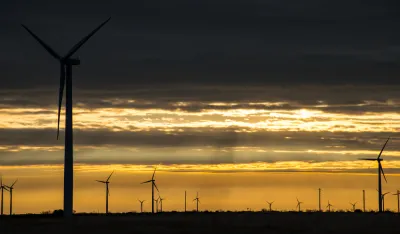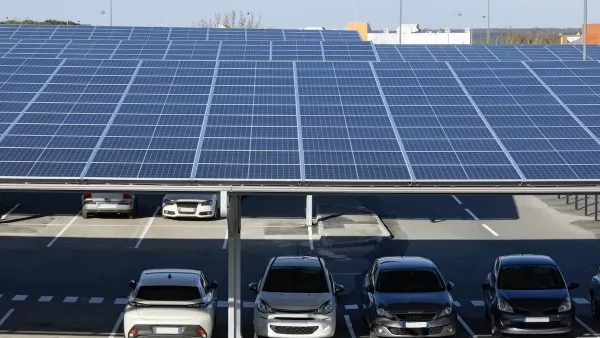Texas leads the country in wind energy production, but it, and other conservative states, continue to resist efforts to promote the switch to renewables.

"The states that are most deeply integrated into the existing fossil-fuel economy, either as producers or as consumers, tend also to be the places that are most resistant to, and separated from, the major demographic, cultural, and economic changes remaking 21st-century American life," writes Ronald Brownstein. "The majority of them rank near the bottom among the 50 states in the share of their residents who hold four-year college degrees, are foreign-born, or work in occupations tied to the new digital economy, according to census figures."
These states also take other socially conservative positions such as abortion restrictions, book bans, and limited LGBTQI rights. Besides highlighting America's cultural divide, this trend, according to Brownstein, "shows how difficult it will be to establish any consensus for national action to accelerate the shift from fossil fuels to clean energy sources, despite the mounting evidence that climate change threatens all regions of the country (and the world)."
Yet some of the most conservative states are also some of the nation's biggest clean energy producers, with Texas leading the country in renewable energy projects. Brownstein describes how political leaders often stand in the way of incentives that would boost the renewables economy and create jobs in their states.
"The bipartisan infrastructure bill that Biden signed last year included several provisions designed to channel jobs in the clean-energy economy toward places that would be hurt by diminished reliance on fossil fuels, such as coal communities," but the plan remains stalled in Congress.
Renewable energy has grown steadily as a source of power in the U.S. In December 2021, nearly 24 percent of electricity came from renewable sources, up from 19.4 percent in December 2020. Brownstein questions how long, given the economic realities of fossil fuel supplies and energy production, the transition to clean energy can remain a politically divisive issue.
FULL STORY: The Green-Energy Culture Wars in Red States

National Parks Layoffs Will Cause Communities to Lose Billions
Thousands of essential park workers were laid off this week, just before the busy spring break season.

Retro-silient?: America’s First “Eco-burb,” The Woodlands Turns 50
A master-planned community north of Houston offers lessons on green infrastructure and resilient design, but falls short of its founder’s lofty affordability and walkability goals.

Delivering for America Plan Will Downgrade Mail Service in at Least 49.5 Percent of Zip Codes
Republican and Democrat lawmakers criticize the plan for its disproportionate negative impact on rural communities.

Test News Post 1
This is a summary

Test News Headline 46
Test for the image on the front page.

Balancing Bombs and Butterflies: How the National Guard Protects a Rare Species
The National Guard at Fort Indiantown Gap uses GIS technology and land management strategies to balance military training with conservation efforts, ensuring the survival of the rare eastern regal fritillary butterfly.
Urban Design for Planners 1: Software Tools
This six-course series explores essential urban design concepts using open source software and equips planners with the tools they need to participate fully in the urban design process.
Planning for Universal Design
Learn the tools for implementing Universal Design in planning regulations.
EMC Planning Group, Inc.
Planetizen
Planetizen
Mpact (formerly Rail~Volution)
Great Falls Development Authority, Inc.
HUDs Office of Policy Development and Research
NYU Wagner Graduate School of Public Service





























